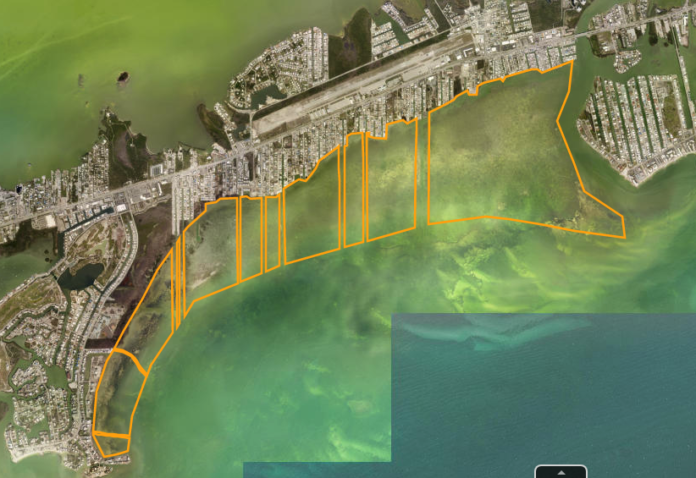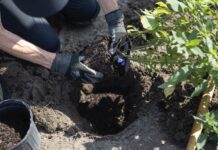It wasn’t quite the standing-room-only crowd on Sept. 30 in Marathon High School’s auditorium, but the audience was substantial, to hear region-specific details about the National Marine Wildlife Sanctuary’s Restoration Blueprint plan. About a half-dozen armed officers were on hand, but the evening’s tone was respectful.
“We are looking for your input on this,” said sanctuary superintendent Sarah Fangman. “We are making decisions that are hard, to address the challenges our resources are facing. We may not like all the changes, but our kids will.”
Anthony and Michelle Nassaur are concerned about the no-motor zone proposed on the oceanside of Marathon. It runs from Vaca Cut to Tingler Island and is bisected by 10 channels.
“We live on 63rd street,” said Anthony. “I can’t get from my canal to one of those channels. What am I supposed to do? I’m concerned about the loss of use.”
Before the beginning of an hour-long presentation, Fangman addressed the three “elephants” in the room. The first is the notion that locals (or passengers on non-commercial boats) would be denied access to Sombrero Lighthouse under one of the proposed alternatives. She said language would be added to the next draft that would make it clear that is not the case. Second, that these proposed changes to the sanctuary have appeared out of thin air; she said there have been more than 70 public meetings that generated 1,500 comments and 200 suggestions. Third, that “new areas” are already being marked.
“The Fish and Wildlife Commission is just beginning to put signs up in areas that have been zoned since 1992. The timing is confusing,” she said.
Throughout the presentation, sanctuary staff passed out blue comment cards that were collected and grouped by subject. Then sanctuary staff came up on stage to answer questions.
Bill Kelly, the director of the Florida Keys Commercial Fishing Association said his concerns range from the use of outdated numbers to lack of specificity.
“None of these maps have latitude and longitude data. How do they define trolling? What is idle speed? What is considered a large vessel?” Kelly said. “The FKCFA wants the sanctuary to focus on three things — water quality, education and law enforcement.”
Many locals had questions about how the sanctuary regulations would be enforced. FWC’s Capt. David Dipre fielded that question. He told the audience the FWC force has 51 positions in the Keys, of which only 41 are currently filled. He said there’s a need for better, bigger law enforcement and urged locals to reach out to legislators about the budget.
“Regardless if you have enforcement, most people will obey the law, especially if it’s for the right reason,” Dipre said. “Even if enforcement isn’t perfect, it doesn’t mean the sanctuary rules are a bad idea.”
Others in the audience questioned the efficacy of closing more areas when existing Special Preservation Areas, such as Looe Key, have continued to deteriorate.
“We know this is not the only answer,” said the sanctuary’s Andy Bruckner, mentioning other initiatives and agencies such as sewering the Keys and increasing water flow to Florida Bay from the Everglades. “But it’s a step in the right direction. I think we are making progress in addressing the threats.”
Bruckner also talked about the small-scale successes of outplanting new corals to the reef and the need for more research to determine what methods to use and how to execute large-scale projects.
When the new regulations are passed, the need for more markings — buoys and signs — will only increase. As Fangman noted, not all current zones are marked. A sanctuary staff person said all the new zones probably won’t be marked either.
“You don’t want to see a string of channel markers — that’s not visually appealing,” he said.
The public comment period on the Restoration Blueprint runs through January 2020. At that point, Fangman said, all the comments will be “synthesized” and brought back in one draft plan without alternatives. Again, the public will have a chance for input, before the agency issues the Environmental Impact Study, it’s approved and passed into law.
An audience member passed up a comment card that acknowledged how the suggestions would be handled, but wanted to know who had the final authority.
“The sanctuary,” Fangman said, “and our state partners.”
The next informational meeting will be Monday, Oct. 7 from 6 to 9 p.m. at Coral Shores High School. Only written comments will be accepted. The sanctuary will host a public meeting in Marathon on Wednesday, Nov. 6 from 6 to 9 p.m. at Marathon High School.
























